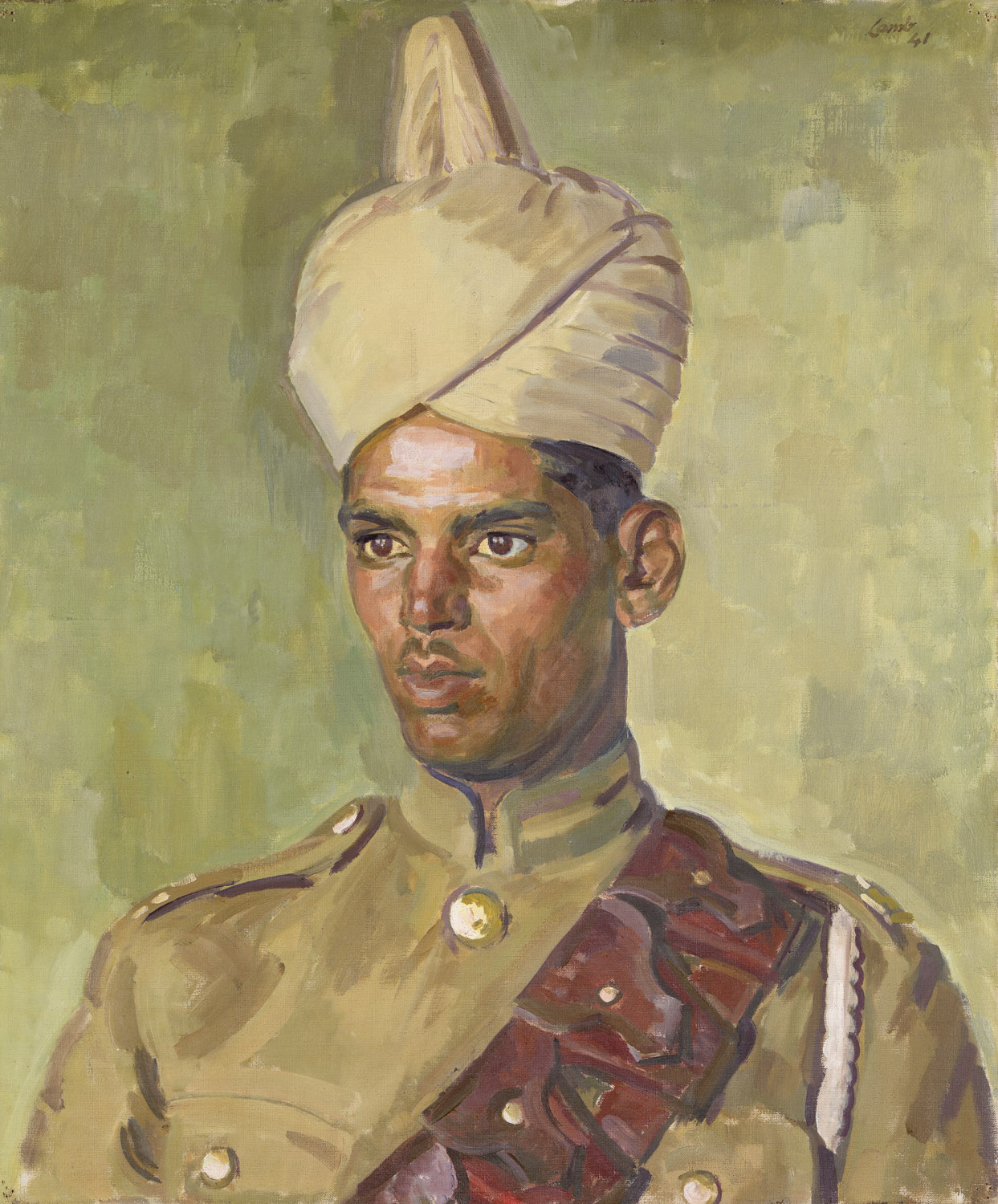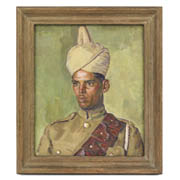Details
- Object type
painting
- Title
Driver Abdul Ghani
- Artist/Maker
Henry Lamb artist
- Culture/School
English
- Place Associated
England, Hereford (place made)
- Date
July 1941
- Materials
oil on canvas
- Dimensions
framed: 770 x 660 x 70 mm; unframed: 610 mm x 508 mm x 10 mm
- Description
-
Abdul Ghani served in Force K6 of the Royal Indian Army Service Corps in Britain during World War II. He was a mule driver (service no. 178415) in the 29 Mule Company, a mule transport company used to carry ammunition and supplies to frontline locations where motorised transport could not reach. They were very experienced in dealing with difficult terrain and weather conditions. Ghani was one of about 4,000 Indian soldiers who came to Britain in World War II, after being evacuated from St Nazaire following Germany’s invasion of France and Belgium. In 1942 Ghani’s company was in the north east of Scotland helping farmers, building coastal defences and carrying out training exercises. Photos and letters document the warm reception the company received here. As Muslims, they had their own butchers and cooks to prepare halal meals, and barbers to shave and cut their hair.
Australian-born Henry Lamb, was brought up in Manchester. He initially studied medicine but then left for a career in art, from 1905 studying at Chelsea School of Art in London. He was a founder member of the Camden Town Group in 1911 and the London Group in 1913. During World War I he returned to the medical profession, qualifying as a doctor and serving under the Royal Army Medical Corps as a battalion medical officer, during which time he was badly gassed, and was awarded the Military Cross. At this time he was approached by the British War Memorials Committee to produce a large painting for a proposed national Hall of Remembrance. In World War II, Lamb was appointed a full-time war artist by the War Artists' Advisory Committee and produced a significant number of portraits and figure paintings. As well as portraits of high-ranking commanders, Lamb was drawn to paint ordinary servicemen and women.
Lamb recognised the invaluable contribution that soldiers from other countries made to the war. In May 1941 he wrote: ‘I am anxious to do more paintings of foreigners in this country which seems a more interesting line for history & document than an endless series of generals (native).’ His portraits are notable for their sense of humanity. His portrait of Abdul Ghani conveys dignity and pride. Ghani proudly wears his military uniform with its braided cord and ammunition belt over his left shoulder - although, he was disappointed that the ammunition belt hid the frontier medal that he was awarded in 1938. The turban (pagri) he wears is significant. It had two parts, a cloth (lunghi) wound around a conical woven cap (kullah). The treatment of the end of the lunghi was an indicator of rank. The lower ranks tucked theirs in, like Ghani, while the more senior ranks fanned theirs out like a peacock’s tail.
In September 1941 Lamb’s portrait of Ghani was hung in the vestibule of the National Gallery in London, along with his portrait of Major Mahomed Akbar Khan. Glasgow Museums was presented with the painting in 1948 by the War Artists Advisory Commission through the Imperial War Museum. Paintings were distributed throughout museums in Britain, and Glasgow Museums received 70 paintings and drawings by artists including Muirhead Bone, James Cowie, Hugh Crawford, Henry Moore, Paul Nash, Eric Ravilious, Graham Sutherland and Carel Weight.
- Credit Line/Donor
Presented by the War Artists Advisory Commission through the Imperial War Museum, 1948
- ID Number
2750
- Location
Kelvingrove Conflict and Consequence


